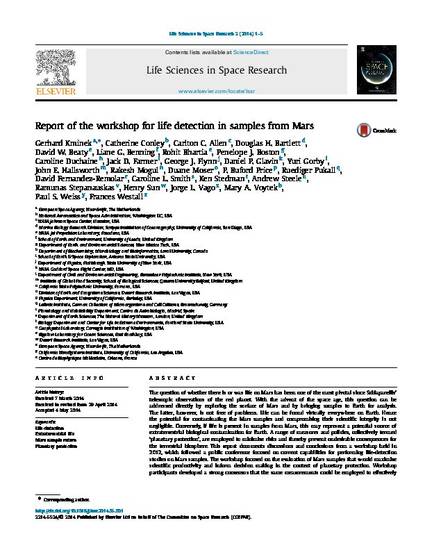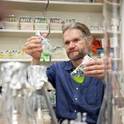
- Life on other planets,
- Mars (Planet),
- Microbial contamination -- Prevention,
- Mars surface samples -- Analysis,
- Exobiology
The question of whether there is or was life on Mars has been one of the most pivotal since Schiaparellis’ telescopic observations of the red planet. With the advent of the space age, this question can be addressed directly by exploring the surface of Mars and by bringing samples to Earth for analysis. The latter, however, is not free of problems. Life can be found virtually everywhere on Earth. Hence the potential for contaminating the Mars samples and compromising their scientific integrity is not negligible. Conversely, if life is present in samples from Mars, this may represent a potential source of extraterrestrial biological contamination for Earth. A range of measures and policies, collectively termed ‘planetary protection’, are employed to minimise risks and thereby prevent undesirable consequences for the terrestrial biosphere. This report documents discussions and conclusions from a workshop held in 2012, which followed a public conference focused on current capabilities for performing life-detection studies on Mars samples. The workshop focused on the evaluation of Mars samples that would maximise scientific productivity and inform decision making in the context of planetary protection. Workshop participants developed a strong consensus that the same measurements could be employed to effectively inform both science and planetary protection, when applied in the context of two competing hypotheses: 1) that there is no detectable life in the samples; or 2) that there is martian life in the samples. Participants then outlined a sequence for sample processing and defined analytical methods that would test these hypotheses. They also identified critical developments to enable the analysis of samples from Mars.

Copyright 2014 The Committee on Space Research (COSPAR). Published by Elsevier Ltd.
To the best of our knowledge, one or more authors of this paper were federal employees when contributing to this work. This is the publisher’s final pdf and can be found at: http://www.sciencedirect.com/science/article/pii/S2214552414000273